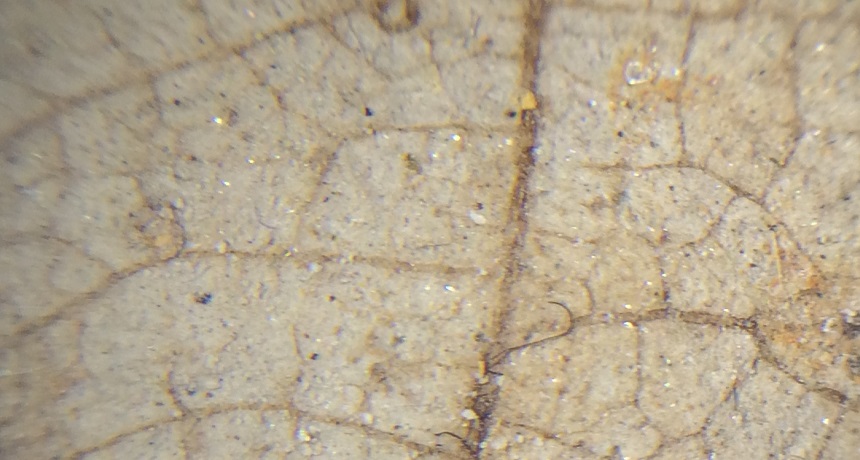Give the gift of science without breaking the bank
Not all science presents have to be expensive

A small fossil leaf, magnified 30 times its normal size, courtesy of my smartphone microscope attachment.
B. Brookshire/SSP
There are lots of holiday gifts out there for people who like science. Everything from your very own remote-operated underwater robot to 3-D printers that can make parts and pieces to build anything you desire. While these gifts would be a lot of fun, they can also cost a lot of money. Luckily, there are options out there that don’t cost a lot, but still give your science student or science classes opportunities to learn about the world around them.
The smartphone microscope
If you have a smartphone — or any handheld phone that can take pictures — there are ways to turn that phone into a microscope. I have a handheld microscope that attaches to my phone. The microscope slips over my camera’s lens and magnifies anything seen through it to appear 30 times larger. And with the camera capabilities of the phone, it’s easy to take a snapshot of anything I see. If you want a project, you can even try building a smartphone microscope yourself.
Options are available from the most basic (about $9) to the very expensive (more than $100).
Planting scientific ideas
You might have brown eyes like your mother, or thick hair like your dad. Much of the way we look is due to our genes — instructions that tell our cells what proteins to produce and how to function. Genes are important for everything from our height to our behavior. But it can sometimes be hard to understand how they work. The American Society of Plant Biologists has a group of plants called Fast Plants that show off how genes can be inherited across generations. These plants are free to teachers for use in the classroom to give students the gift of studying genetics.
Giving time to science
This holiday season, take a few minutes to help scientists, all from the comfort of your home computer. Scientists need you to help them count penguins in Antarctica, hunt kelp beds in the ocean and decipher the squeaks of bats. They often have large amounts of pictures and recordings, but need citizen scientists — people of all ages — to help them wade through it all. Many of the citizen science projects are designed as fun games, and all of them help contribute to important scientific projects.
A gift for bats or birds
While you’re putting together your gift list, make sure to think of wildlife. Build a bat house to give local bats a place to stay during the summer. Or try building a birdhouse or feeder. Then, you can keep and eye on your birdhouse or bat house to see who takes up residence. You can track the birds and other creatures that come to your feeder and see which species arrive, and how they change at different times of year. Bird and bat houses and feeders are active projects with the chance to observe your environment.
Apps
If you’re heading a long way to see friends and family for the holidays, you might as well take some science in your pocket. Why not practice your frog dissections with the aid of your smartphone? I tested three of these and recommend the Froguts Frog Dissection. Once you arrive at your destination, other smartphone apps can help you identify local plants or track fireflies if they are in season.
There’s even a smartphone app for your dog. Some scientists think that Fido can sense the magnetic fields produced by the magnetic metals inside Earth. These metals produce a field that extends from pole to pole, which we usually sense with a compass. The scientists hypothesize that dogs might line up with this magnetic field when they pee or poop. Now, you can find out if Fido lines up along Earth’s magnetic field when he’s doing his doggie doo-doo with a free app that helps these scientists collect data.
Follow Eureka! Lab on Twitter
Power Words
app Short for application, or a computer program designed for a specific task.
citizen science Scientific research in which the public — people of all ages and abilities — participate. The data that these citizen “scientists” collect helps to advance research. Letting the public participate means that scientists can get data from many more people and places than would be available if they were working alone.
gene (adj. genetic) A segment of DNA that codes, or holds instructions, for producing a protein. Offspring inherit genes from their parents. Genes influence how an organism looks and behaves.
genetic Having to do with chromosomes, DNA and the genes contained within DNA. The field of science dealing with these biological instructions is known as genetics. People who work in this field are geneticists.
microscope An instrument used to see objects and details too small to see with the eyes alone.
smartphone A cell (or mobile) phone that can perform a host of functions, including search for information on the Internet.